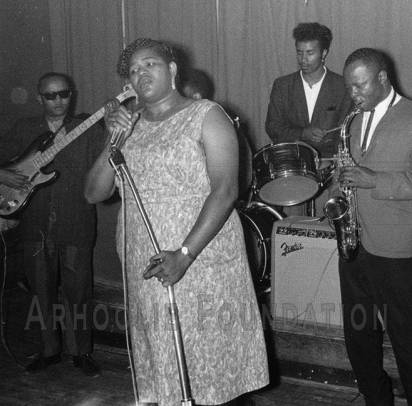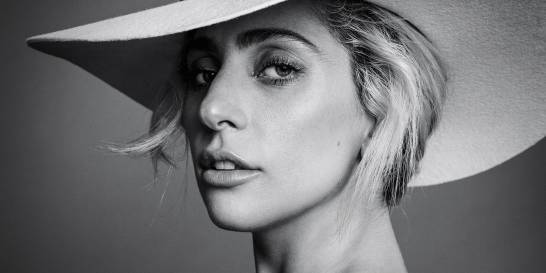“Those days, I was a bit more selfish, a bit more macho, and I sort of omitted to mention her contribution.”
Ono announced the news on her Twitter feed, and her son, Sean, posted it on his Instagram page.
I’d like to say thank you to the National Music Publishers’ Association @NMPAorg for its courageous move.
love, yokohttps://t.co/0bkYu6CJpF pic.twitter.com/8WsrBKtoba— Yoko Ono (@yokoono) June 15, 2017
1. Chien-Shiung Wu vs. Lee & Yang — Mathematics
During WWII, Chinese nuclear physicist Chien-Shiung Wu worked on the Manhattan Project to develop the first atomic bomb alongside Tsung-Dao Lee and Chen Ning Yang. The two men theorized that the law of parity, an accepted idea that everything, including atomic particles, has “a fundamental symmetry,” was false. Wu, though, designed and conducted the experiments to prove their dismissal of that law.
Lee and Yang won the Novel Prize for the work. Wu was ignored.
2. Rosalind Franklin vs. Watson & Crick — Science
In 1952, Rosalind Franklin, a confident, young female scientist, famously helped James Watson and Francis Crick discover DNA’s double-helix shape. They used her photos and interpreted her data without her permission, and their only acknowledgment of her in their published research said simply, “We have also been stimulated by a knowledge of the general nature of the unpublished results.” Later, Watson slighted her in his autobiography, calling her a “belligerent, emotional woman unable to interpret her own data” and reducing the accomplished scientist to only her physical appearance, saying she “might have been quite stunning had she taken even a mild interest in clothes.” Watson and Crick won the Nobel Prize in 1962, four years after Franklin’s death.
3. Big Mama Thornton vs. Elvis Presley — Music
4. Margaret Keane vs. Walter Keane — Visual Art

5. 46 Female Scientists vs. Newsweek — Science
6. M.I.A. vs. Male Reporters — Music
Pop artist M.I.A. spoke out in 2007 about male reporters considering her ex, Diplo, the “mastermind” behind her debut album. She told Pitchfork that she had essentially finished the album before meeting the American DJ. He only contributed to one track, sending her a loop that she eventually turned into “Bucky Done Gun.” M.I.A. vented, referencing not only her gender as a source of her discrimination but her Sri Lankan-Tamil heritage:
“I just find it kind of insulting that I can’t have any ideas on my own because I’m a female, or that people from undeveloped countries can’t have ideas of their own unless it’s backed up by someone who’s blond-haired and blue-eyed.”
7. Lady Gaga vs. Donald Trump — Music/Fame
8. Whitney Wolfe vs. Male Tinder Executives — Business Management
9. Ke$ha vs. Dr. Luke — Creative Expression & Bodily Autonomy
10. Katinka Hosszu vs. Male Reporters — Sports

In 2016, Olympic swimmer Katinka Hosszu of Hungary broke a world record in Rio. The camera panned to her husband and coach, Shane, and a male reporter announced: “There’s the man responsible” for Hosszu’s accomplishment.
Hosszu, of course, doesn’t owe her success to anyone but herself: she emerged as one of the most dominant female swimmers and has earned the nickname “Iron Lady” for her skills. She started training at a very young age and enrolled in a sports high school at 13. Later, she moved to the U.S. to attend the University of Southern California — before learning English. She became the first swimmer to win more than $1 million in prizes and was 2014’s World Swimmer of the Year and her performance in Rio in 2016 was her best yet. Her husband may have helped her curate her skill, but the ability is no one’s but her own.
11. Taylor Swift vs. Kanye West — Music/Fame
“I feel like me and Taylor might still have sex. Why? I made that bitch famous. (God damn) I made that bitch famous.”
The lyric refers to the 2009 scandal at the VMAs when West rushed onstage as Taylor Swift won the Best Female Artist of the Year award, belligerently asserting that Beyonce deserved it instead. West appears to believe that his outburst “made [Swift] famous” and, as such, he is entitled to sex with her. After releasing the track, West lied to the public to quell backlash, claiming that Swift “thought it was funny and gave her blessings,” though she never knew the lyrics in their entirety until the song aired. West then said that the word “bitch is an endearing term in hip hop.”
Clearly, both gender discrimination and men taking credit for women’s successes are very real problems across all fields and have slowed little with time. Hopefully, Yoko Ono finally receiving recognition for her role in creating “Imagine” will establish a precedent and send a message to the world about equality and women’s abilities.
















Thank you for the enlightening article. It needs to be the front page story of the NYT.